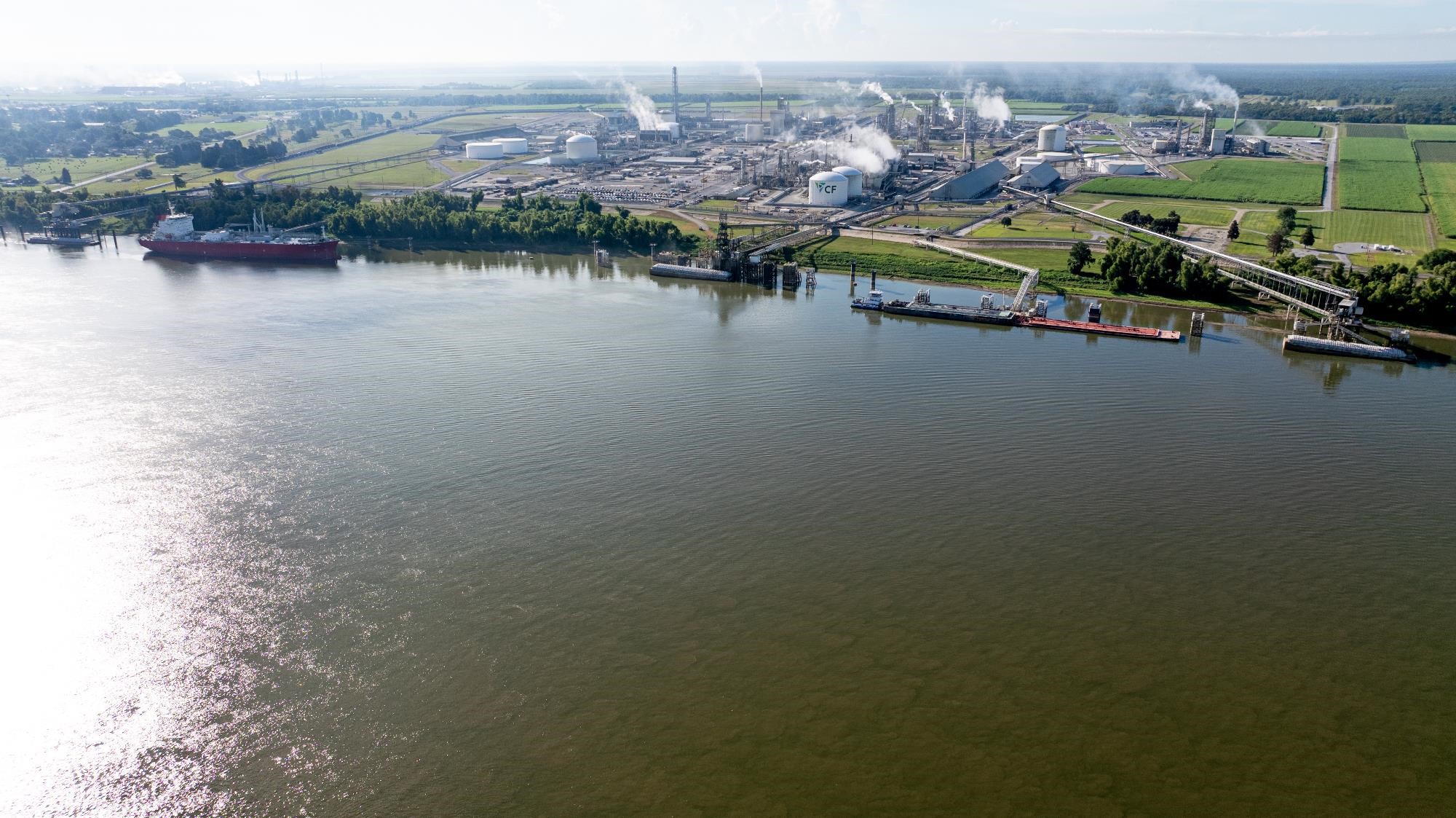At our core, CF Industries is a producer of ammonia.
As the world's largest producer of ammonia, which has a chemical composition of NH3, CF Industries has a unique role to play in addressing some of the world's most critical needs: food to feed a growing population and clean fuel to power the world's future.
Providing Energy to Crops
The nitrogen content in ammonia and ammonia-derived fertilizers provides energy to crops to dramatically increase yields. Along with advancements in seed technology and farming practices, the use of nitrogen fertilizer dramatically increased food production in the 1900s. It is estimated that fertilizer is responsible for 50% of the world’s food.
Source of Clean Energy
Many energy-intensive industries view ammonia’s hydrogen content as a scalable source of clean energy that can help reduce their own carbon footprints. Ammonia represents an efficient mechanism to both ship and store hydrogen and has potential to serve as a clean energy source in its own right, as it does not contain or emit carbon.
Our Strategy
Underpinned by our values and driven by our mission to provide clean energy to feed and fuel the world sustainably…
…our strategy is to leverage our unique capabilities to accelerate the world's transition to clean energy.
Unique Capabilities
We have built, and maintain to the highest standards, what we believe to be the leading ammonia and nitrogen manufacturing and distribution network in our industry. Our network is further differentiated by our safety culture, operational excellence, scale, people, and structural advantages from our North American location, enabling CF Industries to provide a non-discretionary nutrient to help increase crop yields.

Transition
Throughout the nitrogen value chain, participants – from CPG companies to industrials – are increasingly focused on reducing the carbon footprint of their supply chains. Additionally, hard-to-abate industries around the world, such as power generation and marine shipping, that do not use ammonia today are seeking alternative fuels to lower their carbon emissions. Ammonia produced with a significantly lower carbon intensity is a measurable and quantifiable solution.

Clean Energy
In 2020, we expanded our strategic focus to include the growth opportunity presented by low-carbon ammonia to meet both demand by existing customers and new demand from hard-to-abate industries. Decarbonization of our existing network and greenfield low-carbon ammonia capacity growth is at the heart of our strategy, enabling us to bring low-carbon ammonia to market, help existing and new customers achieve their goals, and grow profitably.

Our Committed Goals
Reduce Scope 1 CO2-equivalent emissions by 25% per ton of product by 2030 (2015 baseline year)
Reduce Scope 3 emissions by 10% by 2030 (2020 baseline)
Achieve net-zero Scope 1 and 2 carbon emissions by 2050

Our decarbonization and clean energy initiatives unlock new opportunities...
Through the decarbonization of our operations and active industry partnerships, CF Industries has positioned itself to help decarbonize hard-to-abate industries and create exciting growth opportunities for the Company, such as our Blue Point joint venture with JERA Co., Inc., and Mitsui & Co.
Viable Market Opportunities
Low-carbon ammonia and nitrogen fertilizers provide an unintrusive and certifiable way to support decarbonization of the agricultural value chain, helping CPG companies, ethanol producers and others achieve decarbonization goals
Interest in low-carbon ammonia for industrial applications is growing, especially in Europe, as companies face carbon taxes and look to achieve ESG targets
Ammonia as a low-carbon maritime fuel continues to be the leading alternative fuel candidate
Focus on co-combustion of ammonia in coal power plants to reduce greenhous gas emissions, primarily in Japan and South Korea

…and deliver profitable growth
We will be the first to decarbonize our network at a measurable level, providing CF Industries with tangible benefits: long-term sustainability, a significant return profile and a differentiated product offering to existing and new customers. As decarbonization projects have come online in 2025, we have been accruing both structural and market benefits.
- Structural incentives: These include the 45Q tax credit in the United States for carbon capture and permanent geological storage and carbon tax avoidance in Canada and Europe.
- Premium pricing: We expect to sell low-carbon ammonia and low-carbon nitrogen fertilizers for a premium over conventionally manufactured products.
- Carbon credit sales: We have the opportunity to monetize decarbonization through the sale of carbon credits.
Strengthen and Enhance Our Existing Business
Executing our strategy enhances and strengthens existing business for the long-term by providing energy to crops through premium low-carbon ammonia and nitrogen fertilizers.
Unlock New Growth Opportunities
Providing low-carbon ammonia to hard-to-abate industries as a clean energy source represents a significant growth opportunity for the Company to meet new demand for its core product.
